What is quantitative market research in marketing?
Methods, examples, and tips.

Similar cases:
Are Market Researchers Allergic to AI?Consumer Insights About Sex ToysConversational Research EvolutionIf you’re trying to grow a business or improve your marketing strategy, you need more than just gut instinct. You need data. That’s where quantitative market research comes in. It’s a structured, numbers-based approach to understanding your audience, tracking what’s working, and making decisions backed by evidence, not guesswork.
Let’s break down exactly what quantitative research is, the key methods used in quant, the different types of studies, and some real-world examples to help bring it to life.
What is Quantitative Market Research?
Quantitative research in marketing is about gathering measurable data, the kind you can analyse with numbers, graphs, or percentages. It answers the questions like “how many,” “how often,” or “how likely,” and it’s the opposite of qualitative research, which is more about opinions and open-ended insights.
Quantitative research is structured and objective. It’s used to spot trends, understand customer behaviour, and measure campaign results. When done properly, it takes the guesswork out of marketing, giving you real data to guide decisions instead of relying on hunches or assumptions.
How does this work in practice?
Quantitative Research Types: What You’re Trying to Discover
These are the goals behind your research project. Each type helps you explore a different kind of question:
Descriptive research gives you a snapshot of what’s happening. For instance, how many people prefer Brand A over Brand B.
Correlational research looks at relationships between two variables, like whether younger customers are more likely to buy online.
Causal-comparative studies compare different groups to identify patterns, even though the variables aren’t directly controlled.
Experimental research actively tests cause and effect by tweaking one element and seeing what changes.
Each of these types helps gather evidence in a way that’s reliable and repeatable.
Quantitative Research Methods: How You Collect the Data
Once you know what you’re trying to learn, methods are the tools you use to find answers:
Online surveys involve standardized questions sent to a large audience to gather measurable feedback. They are quick to run and can reach a large audience fast.
A/B testing is another common method, where two versions of something (like an email or webpage) are tested to see which one performs better.
Observational research allows businesses to track how people interact with products or websites.
Longitudinal (long-term studies) follow the same group over time to spot changing behaviours.
Even phone or in-person interviews can fall into quantitative research if the questions are structured and the answers can be counted or scored.
These methods all have one thing in common, they give you clean, structured data you can analyse.
Real-Life Examples That Make the Data Matter
Let’s say a brand wants to improve email open rates. They run an A/B test on subject lines, one version gets 20% more opens, so they roll that out to the rest of their list. That’s quantitative research in action.
Another company might send a post-purchase survey to measure customer satisfaction, collecting numerical feedback they can track over time. A coffee chain might run a survey to find out who prefers iced drinks versus hot, and use that data to tailor promotions or product ranges.
A further example might be a software company using quantitative research to test two onboarding flows to see which one leads to more users completing setup. Or a retailer might trial a new store layout and measure whether average basket size increases compared to a control group. In finance, a bank might survey different customer segments to measure awareness and trust in their online banking tools. Based on the responses, they could adjust their marketing campaigns to focus on features that customers are less familiar with. In healthcare, a hospital might measure patient satisfaction using a numerical scale, then break the results down by department to identify which areas need improvement. This kind of structured feedback helps improve services and justify funding decisions.
All of these examples show how quantitative research isn’t just about numbers, it’s about using those numbers to guide action and improve outcomes.
Quantitative vs Qualitative: Knowing the Difference
It’s also worth knowing where quantitative research fits compared to qualitative methods. Quantitative gives you the numbers, the what, when, and how often. Qualitative digs into the why. For example, if your data shows customers are dropping off at a certain stage in a funnel, that’s a quantitative insight. To find out why, you might run a few interviews or focus groups and that’s qualitative. Used together, these approaches give you a fuller picture.
| Quantitative Research | Qualitative Research |
|---|---|
| Based on numbers and stats | Based on words and opinions |
| Large sample sizes | Small sample sizes |
| Structured and objective | Exploratory and flexible |
| Closed questions (e.g. multiple choice) | Open-ended questions |
| Great for measuring patterns | Great for exploring ideas and emotions |
Quantitative is ideal when you want to measure something. Qualitative is better when you want to understand it on a deeper level. For a more in-depth look at quantitative and qualitative methods and how they compare to each other, you can check out this guide on both research types.
Getting Started with Quantitative Research
If you’re planning to run your own quantitative research, start by being clear on your objective. Whether you’re looking to test an idea, measure customer sentiment, or compare campaign performance, your research design should be tailored to the goal.
Choosing the right method comes next, surveys and A/B tests are usually the easiest places to begin. Make sure your questions are clear and your data collection process is consistent. And don’t underestimate the importance of sample size. Too small, and your results might not reflect your audience accurately.
Finally, once the data is in, look beyond the obvious. Good analysis is about identifying trends, spotting gaps, and thinking critically about what the numbers really mean.
Common Mistakes to Watch Out For
Quantitative research is powerful, but it’s easy to go wrong if you’re not careful. One of the biggest issues is asking leading questions or writing unclear ones, which can skew your results and make the data unreliable. Another is failing to define your audience properly, which can lead to results that don’t reflect your actual customer base.
It’s also common to jump straight to conclusions without considering external factors. Just because a campaign performed well doesn’t mean the creative was the reason, timing, audience targeting, or external events could all have played a role.
Being aware of these pitfalls helps you avoid them and keeps your data clean, usable, and valuable.
Whether you’re running a startup or managing a large marketing team, quantitative market research is one of the most reliable ways to understand your customers and shape your decisions. It doesn’t need to be complicated, it just needs to be consistent, intentional, and well-designed.
FAQ
What is quantitative market research?
Quantitative market research centres on collecting hard data you can count, percentages, frequencies, numbers. It’s all about measuring behavior at scale and answering questions like “How many people clicked?” or “How often do they buy?” This method gives you statistically sound insights to support business decisions.
How can I launch a quantitative research project effectively?
Start by defining a specific objective: what exactly do you want to quantify? From there, focus your analysis on patterns, correlations, and actionable insights, not just raw numbers. Pick a method suited to your goal (like a structured survey or a controlled A/B test). Then craft neutral, easy-to-understand questions. Finally, secure a sample size large enough to draw meaningful conclusions.
Why is quantitative research important ?
Quantitative research delivers the evidence you need to reduce risk and make data-driven decisions, whether you’re pricing a product, evaluating ad performance, or identifying the strongest customer segments. It turns assumptions into proof.
Should I use both quantitative and qualitative research?
It depends on your research goal, however these methods do complement each other. Quantitative research arms you with the hard data and tells you what’s happening on a broad scale. Qualitative uncovers the why behind those numbers. Combining both gives you a more complete, nuanced view of your customers’ mindset and behavior.
What mistakes should I watch out for in quantitative research?
A few common traps are ignoring context, like timing, market conditions, or audience filters, when interpreting results. Writing leading or confusing questions that bias responses. Using a sample that is too small or unrepresentative.
Continue reading
Top picks about AI-powered interviewing
Yasna Updates Reporting Feature
Create customized reports by asking simple questions, simplifying data analysis and merging insights.

Yasna Unveils Screening Feature
For Enhanced Respondent Experience and Data Quality Assurance

Yasna.ai Introduces AI Moderator 2.0
Smarter, More Culturally Aware, and Autonomous
